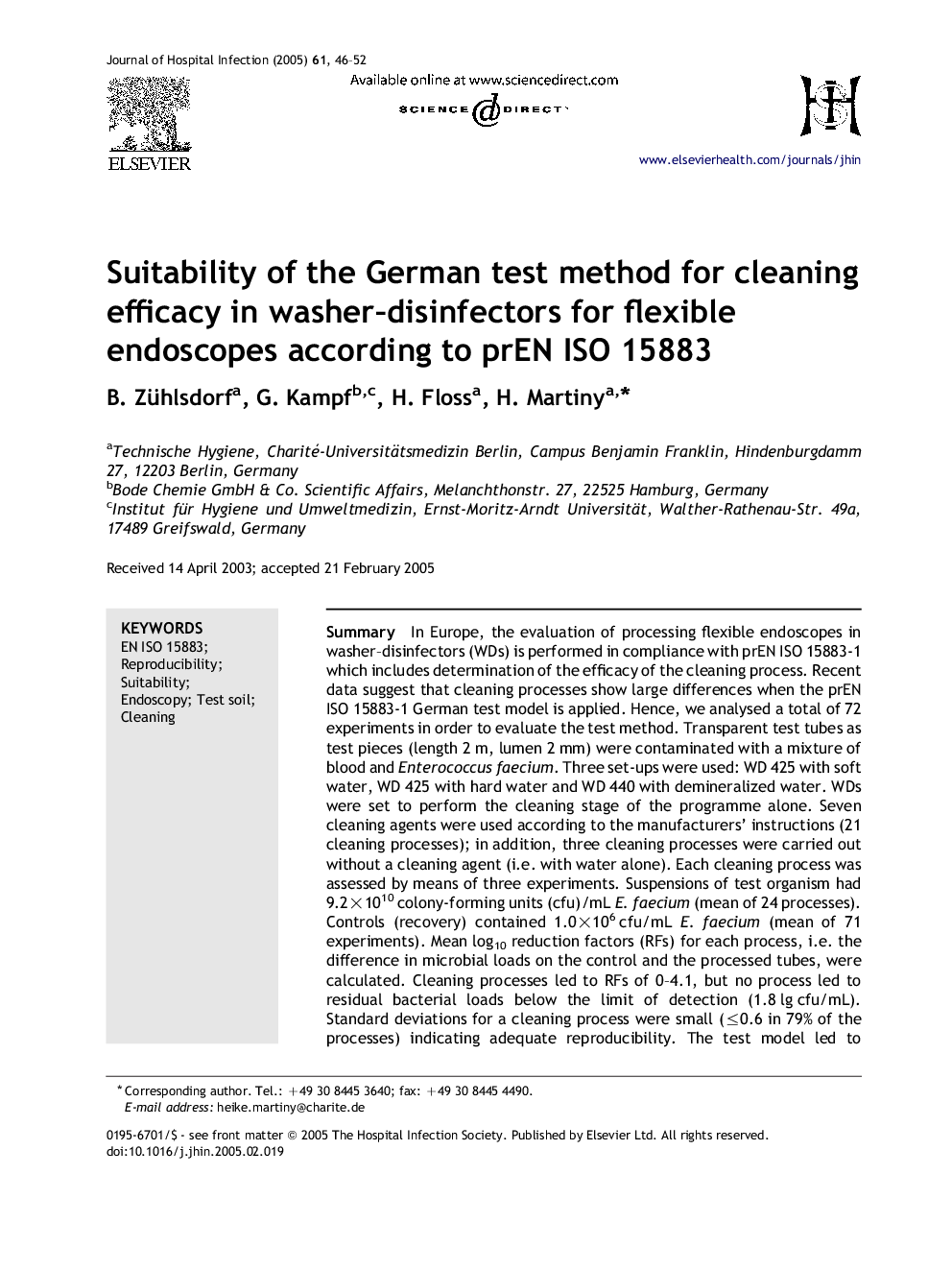| کد مقاله | کد نشریه | سال انتشار | مقاله انگلیسی | نسخه تمام متن |
|---|---|---|---|---|
| 9269212 | 1219329 | 2005 | 7 صفحه PDF | دانلود رایگان |
عنوان انگلیسی مقاله ISI
Suitability of the German test method for cleaning efficacy in washer-disinfectors for flexible endoscopes according to prEN ISO 15883
دانلود مقاله + سفارش ترجمه
دانلود مقاله ISI انگلیسی
رایگان برای ایرانیان
کلمات کلیدی
موضوعات مرتبط
علوم زیستی و بیوفناوری
ایمنی شناسی و میکروب شناسی
میکروبیولوژی و بیوتکنولوژی کاربردی
پیش نمایش صفحه اول مقاله

چکیده انگلیسی
In Europe, the evaluation of processing flexible endoscopes in washer-disinfectors (WDs) is performed in compliance with prEN ISO 15883-1 which includes determination of the efficacy of the cleaning process. Recent data suggest that cleaning processes show large differences when the prEN ISO 15883-1 German test model is applied. Hence, we analysed a total of 72 experiments in order to evaluate the test method. Transparent test tubes as test pieces (length 2 m, lumen 2 mm) were contaminated with a mixture of blood and Enterococcus faecium. Three set-ups were used: WD 425 with soft water, WD 425 with hard water and WD 440 with demineralized water. WDs were set to perform the cleaning stage of the programme alone. Seven cleaning agents were used according to the manufacturers' instructions (21 cleaning processes); in addition, three cleaning processes were carried out without a cleaning agent (i.e. with water alone). Each cleaning process was assessed by means of three experiments. Suspensions of test organism had 9.2Ã1010 colony-forming units (cfu)/mL E. faecium (mean of 24 processes). Controls (recovery) contained 1.0Ã106 cfu/mL E. faecium (mean of 71 experiments). Mean log10 reduction factors (RFs) for each process, i.e. the difference in microbial loads on the control and the processed tubes, were calculated. Cleaning processes led to RFs of 0-4.1, but no process led to residual bacterial loads below the limit of detection (1.8 lg cfu/mL). Standard deviations for a cleaning process were small (â¤0.6 in 79% of the processes) indicating adequate reproducibility. The test model led to reproducible results and revealed large differences between the individual processes. If a cleaning process is intended to result in a bioburden reduction (i.e. RFâ¥4), the control must carry a minimum bioburden of 6.5Ã105 cfu/mL. This was achieved in 58% of the processes. However, controls with a bioburden <6.5Ã105 cfu/mL never yielded a residual bacterial load below the limit of detection. We found that the prEN ISO 15883-1 German test method is suitable to determine the cleaning efficacy in WDs and leads to reproducible and valid results.
ناشر
Database: Elsevier - ScienceDirect (ساینس دایرکت)
Journal: Journal of Hospital Infection - Volume 61, Issue 1, September 2005, Pages 46-52
Journal: Journal of Hospital Infection - Volume 61, Issue 1, September 2005, Pages 46-52
نویسندگان
B. Zühlsdorf, G. Kampf, H. Floss, H. Martiny,